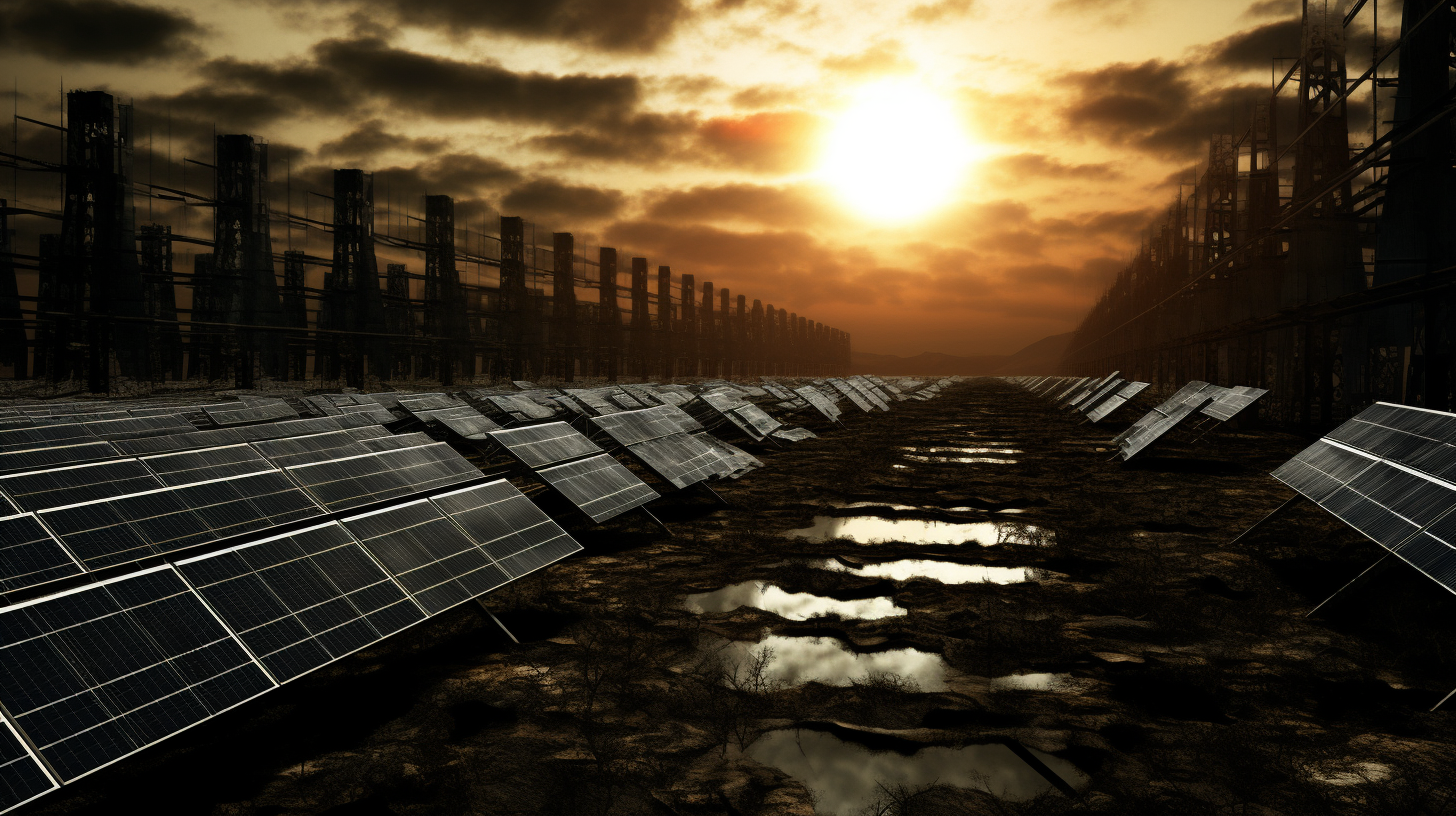In a world where the sun once shone like a golden beacon of hope, humanity sought out the light, harnessing its radiant energy with the belief that our future could be as bright and sustainable as the skies above. Now, as the haze of a relentless smog casts an ever-perpetual gloom, the dreams of Solaria—a land where renewable solar energy promised a cleaner, brighter future—are being eclipsed by irony in the cruelest of fates.
The once majestic solar farms, sprawling across fields like metallic flowers reaching for the sky, are now bleak landscapes of darkened panels, choked by the ashy breath of a dying Earth. The gleaming sun has turned traitor, obscured behind a curtain of human making, leaving the champions of sustainability to grapple in the dark. As the tale of Inferno Oceans and the steam-based dystopias it led to becomes our grim reality, we are forced to reckon with the idea that even the greenest of dreams can wither in the shadow of environmental neglect.
Let us delve into the plight of the Solar Orphans, children who have never felt the comforting warmth of sunlight on their skin, or seen the sharp, defined shadow that one casts on a bright day. Images of bright childhoods are dim memories of a sunlit past, their childhood tales becoming nothing but stories whispered during the quiet, tangible darkness of night—recollections from a world already surrendered to the twilight.
The eclipse of our renewable dreams is not merely a metaphor but a stark, suffocating reality—a twilight of technology wherein the innovation that sought to save the world is ultimately betrayed by the relentless progress of pollution. Advents of new energy sources are being buried, both literally and figuratively, under layers of carbon. And, in a bitter twist of irony, the collapse of these solar dreams has given birth to a black market, a thriving underground haven for once-celebrated solar technologies, now contraband relics of a more hopeful age.
As the populace engages in nocturnal livelihoods, the aged skeptics reminisce, ‘We thought we could prevent this. We believed in the sun.’ Yet, their words dissolve into the ether, much like the disappearing sunlight. The world has transitioned, not seamlessly but with the abruptness of dawn usurped by an untimely dusk, into a society where the currency of daylight is invaluable and artificially generated illumination becomes the false sun for a world in mourning.
Despite the melancholy, one cannot help but ponder on the resilience of humanity, enduring and innovating within the limited luminescence we’ve left ourselves. Bioluminescent agriculture and phosphorescent cityscapes are but patches in the thick quilt of pollution, a testament to our ability to adapt—but one can argue that adaptation in the face of self-destruction is but a slow surrender.
We squandered the solace of solar solutions, watching as they became the relics of our negligence, museums of a future we could have embraced. Hope, which should be abundant and renewable like the energy sources we once idolized, is now itself eclipsed. Yet, in the face of this bleak horizon, Solaria offers a lesson—an epitaph that warns not to let renewable dreams become distant memories, buried under the hubris of humankind.
Consider this, dear reader, are we content to be mere footnotes in the chronicle of civilizations that learned too late—or will we strive to pen a different ending, even as the pen falters and the ink fades in the waning light?
